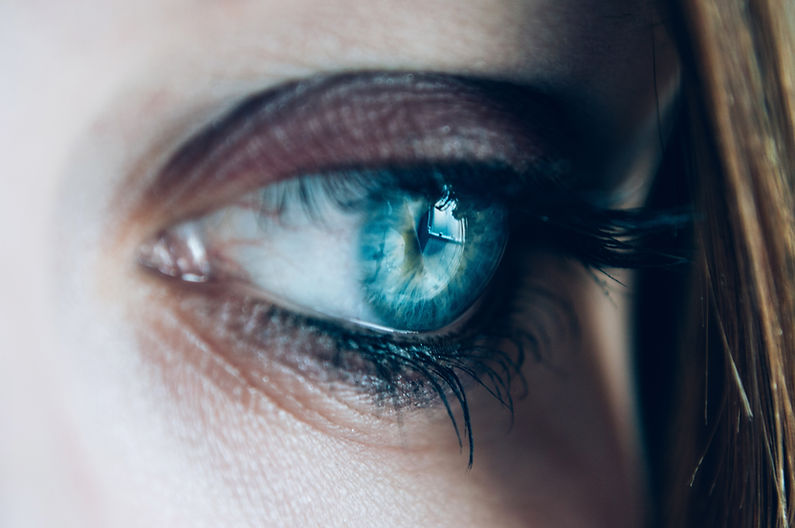
January 9, 2019 DAIGU SIGUA

Mata, a cognate of
Austronesian language family
“Mata” is an indicative cognate in the Austronesian language family. Among the 1268 Austronesian languages, most of them use the term “mata” for the eye. The consistency of “mata” in so many different languages is not an ordinary phenomenon, especially for those languages that are spread so far apart to each other. “Mata” and a few cognates like “lima”, “walu”, “ina” form the key words that establish the Austronesian language family. For everything we know today, we must thank Dr. Robert A. Blust for his major contributions to the field of Austronesian linguistics.
Being the cradle of all Austronesian people, Taiwan might be the dispersal center for the word “mata”. From the most westward, “maso” in Malagasy, to the most eastward, “mata” in Rapanui. From most northward, “maka” in Hawaiian, to the most southward, “mata” in Aotearoa Maori.
The distribution of the word “mata” even extended beyond the traditional range of Austronesian. Such as “me” in Japanese, “mắt” in Vietnamese, and “máti” in Greek. For explanation of these occurrences, we need some more exploration through their background. As to the location of Japan, which just nearby to Taiwan, 30% of the Japanese language has originated from Austronesian. As to Vietnamese,one of their main ethnic groups consist of the Cham, a group of Austronesians from the Malay Archipelago. So it is reasonable to see their words for eye is similar to “mata”. To the more distant Greek, they use “μάτι(máti)” for eye, that is quite similar to “mata”. The relationship between the Austronesian and Greek language belongs to an unexplored linguistic area and will be discussed later if possible.
In Chinese Mandarin, they use both “yan” and “mu” for eye. The word “yan” may relate with the Arabian “eayan”. And the word “mu” may relate to “mata” of Austronesian. So we can say Chinese Mandarin is a mixture of the languages of the Sino-Tibetan and Austronesian.
What is the etymology of “mata”? In southern Africa, there are Khoisans who are recognized presently as the most ancient human beings. Their language also use “mu” for eye. If we follow the theory of “Out of Africa”, that modern human beings come from Africa, then the term “mu“ may be the origin of “mata”.
"Eye" in Malayo-Polynesian Languages:
Cebuano
Filipino
Tagalog
Indonesian
Ibanag
Javanese
Malagasy
Malay
Hawaiian
Maori
Fijian
Rapanui
Samoan
Tahitian
Tongan
Mata
Mata
Mata
Mata
Mata
Mripat
Maso
Mata
Maka
Mata, kanohi
Mata
Mata
Mata
Mata
Mata
"Eye" in Formosan Languages:
Taiwanese
Amis
Atayal
Paiwan
Bunun
Puyuma
Drekay (Rukai)
Tsou
Saisiyat
Yami (Tao)
Thao
Kavalan
Truku
Sakizaya
Seediq
Hla'alua, (Saaroa)
Kanakanabu
Ba̍k
Mata
Roziq, (to see; kita')
Maca
Mata
Matra
Maca
Mcoo
Masa’
Mata
Matha
Mata
Dowriq
Mata
Doriq
Vlaihli, Siakita
Vo’in
"Eye" in Other Languages:
Greek
Vietnamese
Japanese
Arabic
Chinese
Igbo
Turkish
Azerbaijani
Uzvek
μάτι(máti)
Mắt
目 (me)
eayan
Yan
Anya
Göz
Göz
Ko'z
“Mata” for eye in other Austronesian languages:
Abenlen Ayta, Agutaynen, Aklanon, Alangan, Ambala Ayta, Arta, Asi,
Ata Manobo, Bantik, Batad Ifugao, Bikol Central, Binukid, Bolinao,
Botolan Sambal, Brooke's Point Palawano, Butuanon, Capiznon, Cebuano, Central Bontoc, Cuyunon, Dibabawon Manobo, Dupaningan Agta,
Eastern Bontoc, Embaloh, Fijian, Gaddang, Geser-Gorom, Gilbertese, Hiligaynon, Ibaloi, Ibanag, Ilianen Manobo, Ilocano, Ilongot, Indonesian, Iraya, Itawit, Ivatan, Javanese, Kagayanen, Kankanaey, Kapampangan, Kayapa Kallahan, Kinaray-a, Lamboya, Mag-Anchi Ayta, Mag-Indi Ayta, Maguindanao, Makasar, Malay, Mamanwa, Mamboru, Mansaka, Maori, Maranao, Masbatenyo, Mongondow, Niuean, Northern Catanduanes Bicolano, Old Javanese, Pamplona Atta, Pangasinan, Pangutaran Sama, Ponosakan, Rapa Nui, Ratagnon, Romblomanon, Sambali, Samoan, Sangir, Sarangani Blaan, So'a, Southwest Palawano, Surigaonon, Tadyawan, Tagakaulu Kalagan, Tagalog, Tagbanwa, Tahitian, Tausug, Tboli. Tongan, Waray-Waray, Western Bukidnon Manobo, Yakan, Yogad.
Links for further information:
